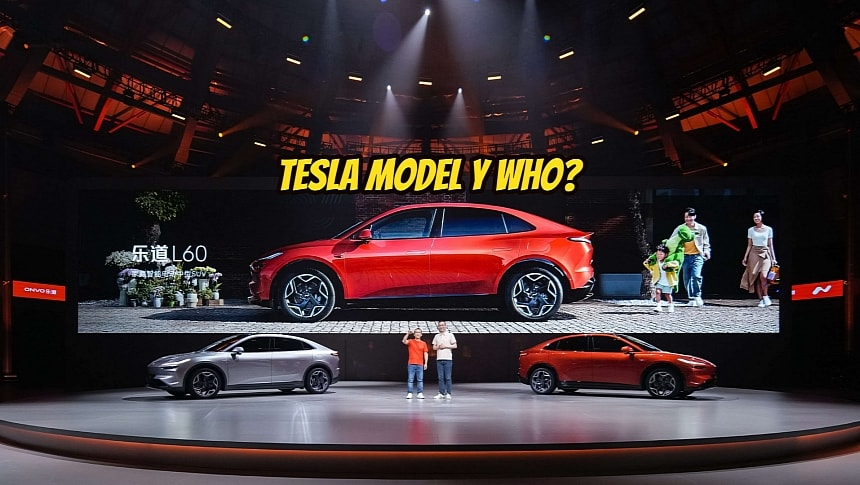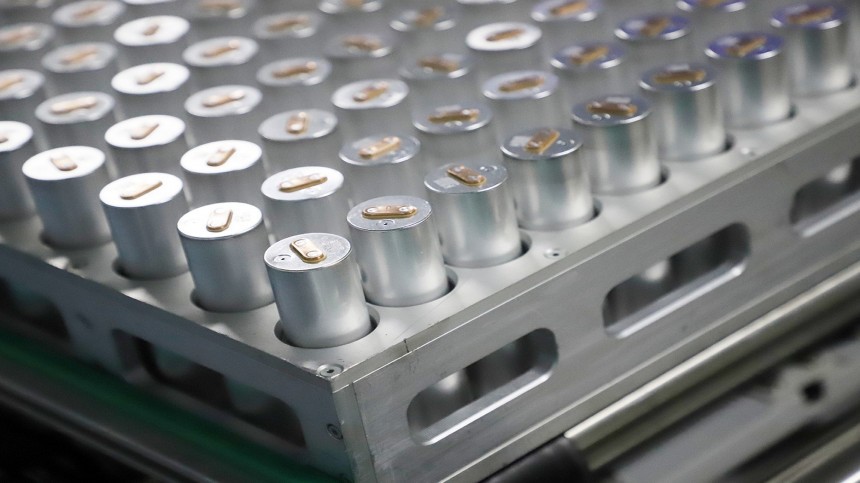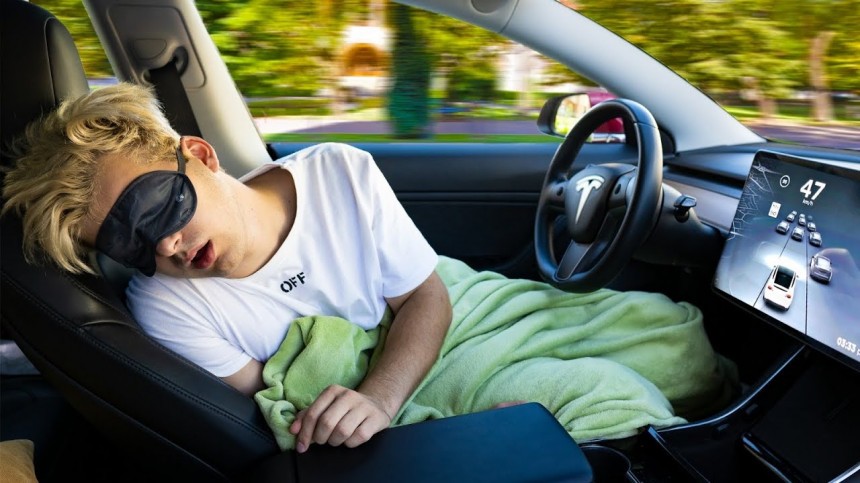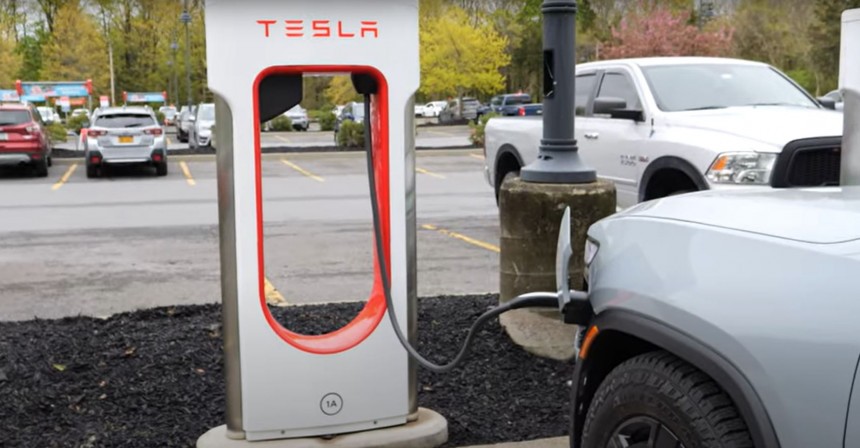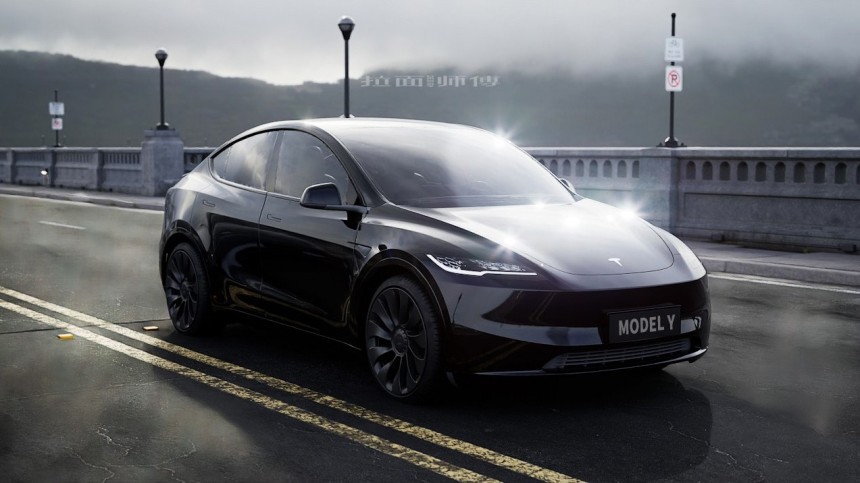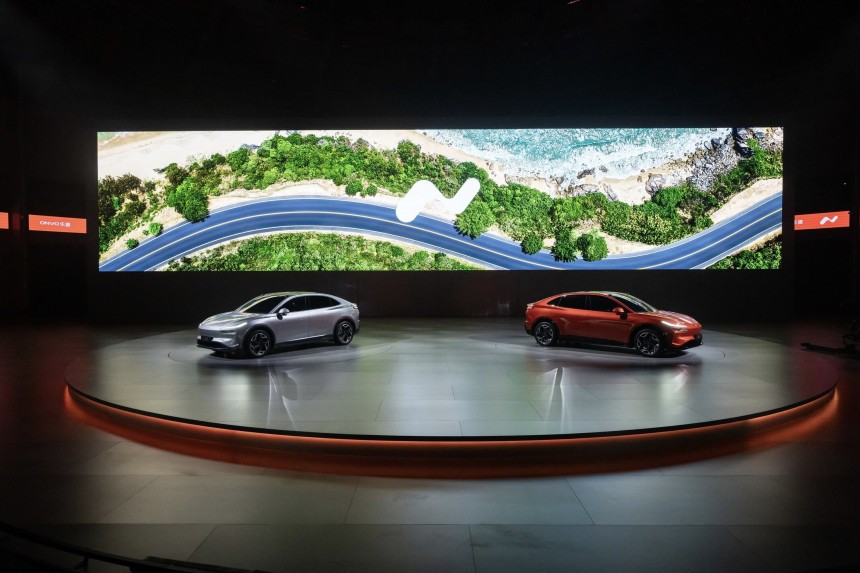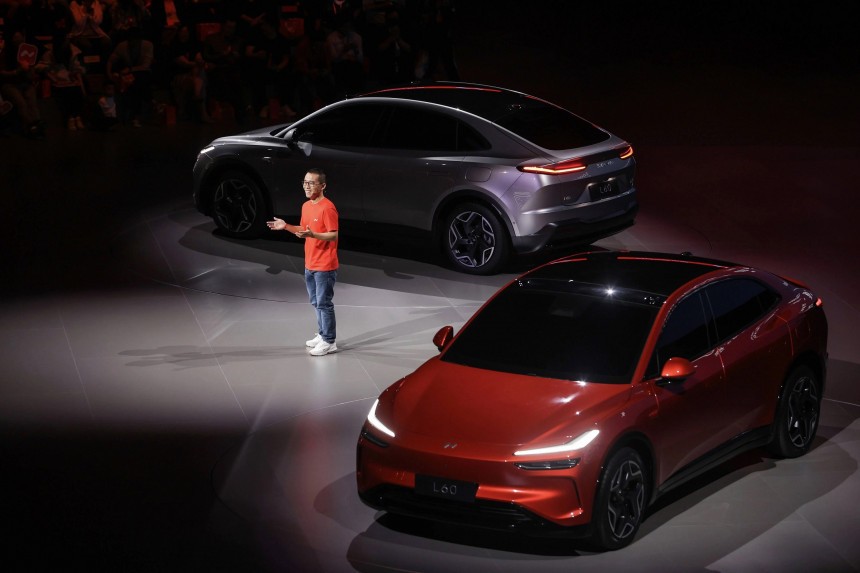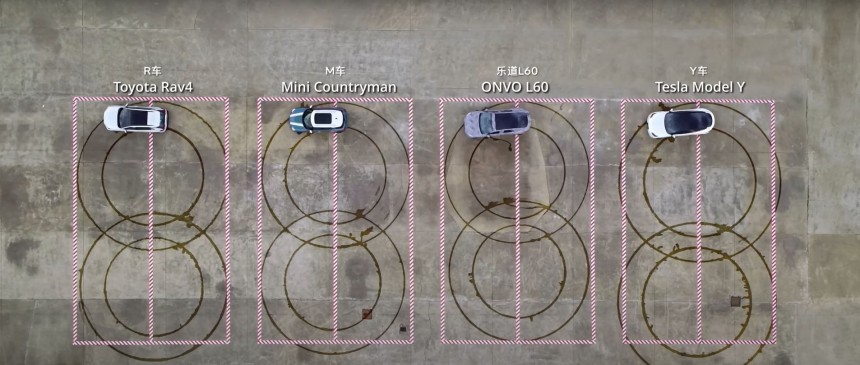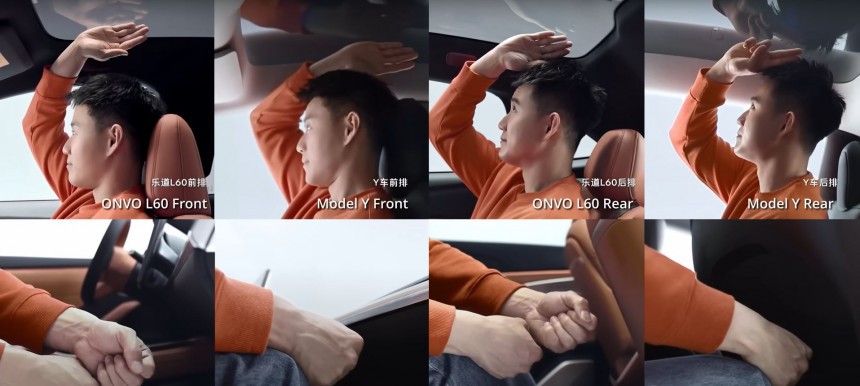You can't talk about electric vehicles (EVs) without mentioning or thinking about Tesla. While it's true that others (like General Motors) had a go at manufacturing zero-tailpipe emission cars and some (like Rolls-Royce co-founder Charles Rolls) thought about them over a century ago, Tesla is the one that succeeded in making the battery-powered vehicle a global phenomenon. After all, the Model Y was last year's world's best-selling vehicle.
But that reign might be short-lived. Nearly every other car maker is trying to come up with a reasonably priced EV that can convince prospective buyers to make the switch, no matter if they come from an internal combustion engine-powered ride or a Tesla.
It's true that EVs aren't on a roll anymore because existing owners' troubles have made prospective buyers a bit more reluctant to go on the zero-tailpipe emission route. High insurance rates, delayed service appointments, expensive repairs, pricey DC fast charging, thieves targeting charging stations, and expensive registration are a few of the reasons why EV adoption in Europe and North America isn't rapidly increasing.
Just to put things better into perspective, under one percent of the cars registered in the US are battery-powered vehicles. If we really want to tackle global warming, we need to accelerate the rate of adoption. But that can't happen with hybrids being more attractive from almost any point of view.
And it also won't happen with our current supply chains. It's still more convenient to buy battery packs from China than to mine, refine, produce cells, and assemble them in North America, Europe, or Australia.
The (state and federal) EV tax credits and the tariffs might help (or, better said, force) battery makers and car companies to finally establish a comprehensive battery production network that doesn't require carbon-intensive maritime transport. But it'll take a while. Hopefully, it won't be a lengthy process.
Don't get ready to type in the comment section just yet. I know that homeownership is a major issue for people who actually have to commute from Monday to Friday. I get it that EVs are generally a bit more expensive than gas-powered rides. I am aware that road-tripping with an EV is something that not many people are willing to do. They're afraid of remaining stranded because high-power charging solutions are still not reliable or as easy to find as gas stations.
But despite all these drawbacks and the fact that hybrids are once again gaining momentum, we are on a path to total electrification. It will happen at some point. It's possible that today's kids will grow up, enter the workforce (whatever will be left of it, anyway), and look at internal combustion engine-powered vehicles like we or our parents looked at horse-drawn carriages. We already have Generation Alpha youngsters who complain about the smell of gas and noisy engines.
In addition, given the industry-wide obsession with self-driving cars, people might not even learn to drive after 2040. It doesn't look good for gearheads.
But until then, there's a long way to go. Nobody can accurately predict the future. In the meantime, what we can do is obtain a better understanding of our world now so we can leave it in better shape for our kids and, eventually, their kids.
Plug-in hybrids (PHEVs) are great, too. Sadly, they don't have the same green potential. I know. I have one. The gas-powered engine still comes on from time to time, even though I charge the battery religiously. That means my car still emits all sorts of nasty particles into the air.
So, let's presume that I must buy another family vehicle to replace this one because I wish to do my part in the fight against climate change. The obvious and simplest choice is a $40,000 Tesla Model 3 RWD. It would literally take me five clicks to order one because I have my card details saved in my browser. Besides that, the Supercharger network is known for being the best option for a quick battery replenishing session. No app authorization is needed. Just plug in, and there it goes.
But this sedan, unlike its Performance sibling, has only one motor, an EPA-rated range of about 270 miles, and is not eligible for the EV tax credit. My other option is to search for a used, non-refreshed Tesla Model 3 priced at under $25,000, which enables me to access the used EV tax credit of up to $4,000.
The brand's Model Y is also a good option, even though it hasn't been updated with everything we have already seen on the Model 3 Highland. Depending on how much I can spend, the Kia EV6, the BMW iX1, the Hyundai Ioniq 5, or the Ford Mustang Mach-E are also interesting options. I would exclude the last one just because the refresh feels underwhelming (no heat pump in 2024!), but that's just me.
At the same time, I'm very interested in the upcoming Rivian R2. A shrunken-down, two-row R1S sounds enticing. Even the R3 would be great as a semi-posh commuting appliance, but that's too far down the line for me to consider it.
But remember how we learned earlier about China's tight grip on a short supply chain? Well, these battery-making companies aren't just selling their products to foreign auto brands. They're also collaborating with domestic automakers. There was an era when China was considered the home of cheap copycats, but it has ended. Brands like Nio, BYD, Geely, BAIC, Changan, XPeng, Li Auto, Airways, and even Xiaomi are making great strides in automotive manufacturing.
Partnering with Western car companies or buying some of them has played out well for the Chinese. Not to mention that many European or North American professionals have been more open to the idea of working or leading a Chinese automaker.
That's reflected in Tesla's 2024 monthly sales and China's falling emissions. The former is in a downtrend, while the latter is in an uptrend. Moreover, that's the country where you'll find over half of all the EVs currently in operation worldwide. See? EV adoption can change local environments for the better.
But if the Chinese aren't buying so many Teslas anymore, what are they spending money on? Well, as you might already expect, they are acquiring zero-tailpipe emission vehicles manufactured by domestic brands. And soon, they'll have one more homegrown option.
Onvo's debut vehicle? The L60! It's an all-electric stylish ride with a seemingly Polestar 4-inspired front-end that wants to steal market share from Tesla's Model Y. Battery-powered crossover utility vehicles (CUVs) or, better said, small eSUVs (what's not an SUV these days, right?) are people's favorites. That's understandable, though. Everyone wants a bit more interior and cargo room, a slightly higher driving position, and better ground clearance.
Nio claims that Onvo's L60 will have a 900V battery architecture, which means that the eSUV should be capable of accepting energy at a rate of well over 350 kW. Besides charging very fast, units equipped with the"Ultra Long Range Battery" should be able to cover 621 miles (1,000 km) on a single charge, a feat that's possible thanks to the low drag coefficient of 0.229.
Owners won't be forced to plug their cars into a DC fast charger because they'll have access to NIO's battery swap stations. The Chinese automaker claims that it takes only three minutes to get a fresh, fully charged high-voltage energy storage unit.
Customers will be able to choose between a rear-wheel-drive 320-hp setup and a dual-motor 455-hp drivetrain. Both models can be equipped with a 60- or a 90-kWh battery pack. Neither of those two options is the "Ultra Long Range Battery."
Because Nio's Onvo targets Tesla Model Y, Toyota Rav4, and Mini Countryman buyers, the L60 will have some advanced driver-assistance stuff, too. But unlike Tesla, the company also uses radars and ultrasonic sensors. That's arguably much safer for in-city hands-free driving. There's no LiDAR, though!
Still, they copied Tesla in one respect: the driver won't have an instrument cluster. Instead, they'll have to make do with a 17.2-inch center touchscreen and a head-up display.
The launch price of this coupe-ified eSUV marketed to families is RMB 219,900 (USD 30,329), and deliveries are scheduled to start this fall.
So, to put it mildly, some people live great lives in large cities because they have well-paying jobs and are motivated to do more or rewarded generously for their contribution to a company, while others don't. What's clear is that because China has a population of over 1.4 billion people (that's four times more than the US!) we can't say that almost everyone can comfortably afford an Onvo L60 or a Tesla Model Y.
It would be like saying that Americans living in Massachusetts can comfortably buy a $50K EV, while for those in California it would be a stretch. Such a statement would be incorrect because Chinese people bought over 21.7 million new cars last year, out of which almost a quarter were all-electric. Moreover, the Asian nation exported over 8.3 million vehicles.
What's similar between American and Chinese new car buyers is their expectations. Both customers who might be looking at something similar to the L60's debut price will want a bunch of features. The difference is that the Chinese buyer will want more for their money. They expect features such as a nice cabin, a head-up display, or ventilated seats. The L60 is supposed to have those and more.
Meanwhile, the Model Y is getting ready for a-la-Model 3 Highland refresh, and it could lose its stalks. That's a problem.
While the Model 3 facelift is being welcomed in the US and Europe as a surprising upgrade because the suspension is better and the cabin is quieter, Chinese buyers haven't been as impressed. Last month, sales dropped considerably in the Asian country. A little over 5,000 people acquired a Model 3 in April. EVs such as the Nio ET5, Zeekr 001, or the Xiaomi SU7 were chosen by thousands of more new car shoppers.
So, Tesla needs to get it together (by September!) and rethink the Model Y facelift if it wants to continue on the same victorious path as before. Otherwise, things could start to look bleak for the world's most valuable automaker. The Model Y's sales supremacy might end abruptly.
Ultimately, whatever happens, the big winner of accelerated EV adoption will be the environment. And, for all our sakes, let's hope it happens sooner rather than later.
It's true that EVs aren't on a roll anymore because existing owners' troubles have made prospective buyers a bit more reluctant to go on the zero-tailpipe emission route. High insurance rates, delayed service appointments, expensive repairs, pricey DC fast charging, thieves targeting charging stations, and expensive registration are a few of the reasons why EV adoption in Europe and North America isn't rapidly increasing.
Just to put things better into perspective, under one percent of the cars registered in the US are battery-powered vehicles. If we really want to tackle global warming, we need to accelerate the rate of adoption. But that can't happen with hybrids being more attractive from almost any point of view.
And it also won't happen with our current supply chains. It's still more convenient to buy battery packs from China than to mine, refine, produce cells, and assemble them in North America, Europe, or Australia.
Mix & match
For the time being, I, an EV enthusiast and owner of a PHEV, believe that the battery-powered vehicle is ideal for people who can charge for cheap (or free) at home or at work. If you own a house with solar panels that generate power, then you're one of the few million who are doing it right. Not only are you not polluting your local environment with all sorts of harmful tailpipe and brake emissions, but you're also using clean, renewable energy. That's the path we should all strive to follow.Don't get ready to type in the comment section just yet. I know that homeownership is a major issue for people who actually have to commute from Monday to Friday. I get it that EVs are generally a bit more expensive than gas-powered rides. I am aware that road-tripping with an EV is something that not many people are willing to do. They're afraid of remaining stranded because high-power charging solutions are still not reliable or as easy to find as gas stations.
But despite all these drawbacks and the fact that hybrids are once again gaining momentum, we are on a path to total electrification. It will happen at some point. It's possible that today's kids will grow up, enter the workforce (whatever will be left of it, anyway), and look at internal combustion engine-powered vehicles like we or our parents looked at horse-drawn carriages. We already have Generation Alpha youngsters who complain about the smell of gas and noisy engines.
In addition, given the industry-wide obsession with self-driving cars, people might not even learn to drive after 2040. It doesn't look good for gearheads.
Future-proofing the future
As drivers, our easiest way to shrink our personal carbon footprint or, better said, have a smaller impact on the environment is to either maintain our current rides in perfect driving condition or to switch to a battery-electric vehicle. The latter may have a slightly larger carbon footprint when coming out of the factory, but, unlike a conventional car, it shrinks as it covers more and more miles.Plug-in hybrids (PHEVs) are great, too. Sadly, they don't have the same green potential. I know. I have one. The gas-powered engine still comes on from time to time, even though I charge the battery religiously. That means my car still emits all sorts of nasty particles into the air.
So, let's presume that I must buy another family vehicle to replace this one because I wish to do my part in the fight against climate change. The obvious and simplest choice is a $40,000 Tesla Model 3 RWD. It would literally take me five clicks to order one because I have my card details saved in my browser. Besides that, the Supercharger network is known for being the best option for a quick battery replenishing session. No app authorization is needed. Just plug in, and there it goes.
The brand's Model Y is also a good option, even though it hasn't been updated with everything we have already seen on the Model 3 Highland. Depending on how much I can spend, the Kia EV6, the BMW iX1, the Hyundai Ioniq 5, or the Ford Mustang Mach-E are also interesting options. I would exclude the last one just because the refresh feels underwhelming (no heat pump in 2024!), but that's just me.
At the same time, I'm very interested in the upcoming Rivian R2. A shrunken-down, two-row R1S sounds enticing. Even the R3 would be great as a semi-posh commuting appliance, but that's too far down the line for me to consider it.
The numbers don't lie
But here's the kicker. Tesla doesn't care too much about Europe or Canada. It wants to keep its dominance in the US, but the market where the world's most valuable automaker is fighting to keep its sales crown is the Chinese one. That's its second-largest market after the US. Last year, it sold almost 604,000 units in the Asian country and exported over 344,000 made-in-China EVs to other parts of the world, such as Europe, Canada, and Australia.Partnering with Western car companies or buying some of them has played out well for the Chinese. Not to mention that many European or North American professionals have been more open to the idea of working or leading a Chinese automaker.
That's reflected in Tesla's 2024 monthly sales and China's falling emissions. The former is in a downtrend, while the latter is in an uptrend. Moreover, that's the country where you'll find over half of all the EVs currently in operation worldwide. See? EV adoption can change local environments for the better.
But if the Chinese aren't buying so many Teslas anymore, what are they spending money on? Well, as you might already expect, they are acquiring zero-tailpipe emission vehicles manufactured by domestic brands. And soon, they'll have one more homegrown option.
Affordable and interesting
Nio has recently announced its first sub-brand, Onvo. Think of it like it's what Chevrolet is to GM. Essentially, we're looking at a volume automaker that wants to attract more people into the Nio universe. When customers feel the need to upgrade, they can choose something from Nio's lineup. In a way, the Chinese company applied the reverse strategy of Toyota and Honda in the US. Lexus and Acura appeared after the Japanese automakers established a comprehensive American presence.Onvo's debut vehicle? The L60! It's an all-electric stylish ride with a seemingly Polestar 4-inspired front-end that wants to steal market share from Tesla's Model Y. Battery-powered crossover utility vehicles (CUVs) or, better said, small eSUVs (what's not an SUV these days, right?) are people's favorites. That's understandable, though. Everyone wants a bit more interior and cargo room, a slightly higher driving position, and better ground clearance.
Nio claims that Onvo's L60 will have a 900V battery architecture, which means that the eSUV should be capable of accepting energy at a rate of well over 350 kW. Besides charging very fast, units equipped with the"Ultra Long Range Battery" should be able to cover 621 miles (1,000 km) on a single charge, a feat that's possible thanks to the low drag coefficient of 0.229.
Owners won't be forced to plug their cars into a DC fast charger because they'll have access to NIO's battery swap stations. The Chinese automaker claims that it takes only three minutes to get a fresh, fully charged high-voltage energy storage unit.
Because Nio's Onvo targets Tesla Model Y, Toyota Rav4, and Mini Countryman buyers, the L60 will have some advanced driver-assistance stuff, too. But unlike Tesla, the company also uses radars and ultrasonic sensors. That's arguably much safer for in-city hands-free driving. There's no LiDAR, though!
Still, they copied Tesla in one respect: the driver won't have an instrument cluster. Instead, they'll have to make do with a 17.2-inch center touchscreen and a head-up display.
The launch price of this coupe-ified eSUV marketed to families is RMB 219,900 (USD 30,329), and deliveries are scheduled to start this fall.
Concerning!
An average Chinese employee supposedly earns around RMB 352,000 (USD 48,549) per year. However, the data is all over the place. Other sources say that your wage greatly depends on where you live. A better way to look at it is by comparing the nominal Gross Domestic Product (GDP) per capita, which measures the strength of the economy on a per-person basis. That was USD 12,720 (RMB 92,225) in 2022. That's how much each Chinese person contributed to the economy in terms of goods and services produced in 2022. In the same year, that figure was USD 76,330 (RMB 553,423) in the US.So, to put it mildly, some people live great lives in large cities because they have well-paying jobs and are motivated to do more or rewarded generously for their contribution to a company, while others don't. What's clear is that because China has a population of over 1.4 billion people (that's four times more than the US!) we can't say that almost everyone can comfortably afford an Onvo L60 or a Tesla Model Y.
It would be like saying that Americans living in Massachusetts can comfortably buy a $50K EV, while for those in California it would be a stretch. Such a statement would be incorrect because Chinese people bought over 21.7 million new cars last year, out of which almost a quarter were all-electric. Moreover, the Asian nation exported over 8.3 million vehicles.
What's similar between American and Chinese new car buyers is their expectations. Both customers who might be looking at something similar to the L60's debut price will want a bunch of features. The difference is that the Chinese buyer will want more for their money. They expect features such as a nice cabin, a head-up display, or ventilated seats. The L60 is supposed to have those and more.
While the Model 3 facelift is being welcomed in the US and Europe as a surprising upgrade because the suspension is better and the cabin is quieter, Chinese buyers haven't been as impressed. Last month, sales dropped considerably in the Asian country. A little over 5,000 people acquired a Model 3 in April. EVs such as the Nio ET5, Zeekr 001, or the Xiaomi SU7 were chosen by thousands of more new car shoppers.
So, Tesla needs to get it together (by September!) and rethink the Model Y facelift if it wants to continue on the same victorious path as before. Otherwise, things could start to look bleak for the world's most valuable automaker. The Model Y's sales supremacy might end abruptly.
Ultimately, whatever happens, the big winner of accelerated EV adoption will be the environment. And, for all our sakes, let's hope it happens sooner rather than later.
